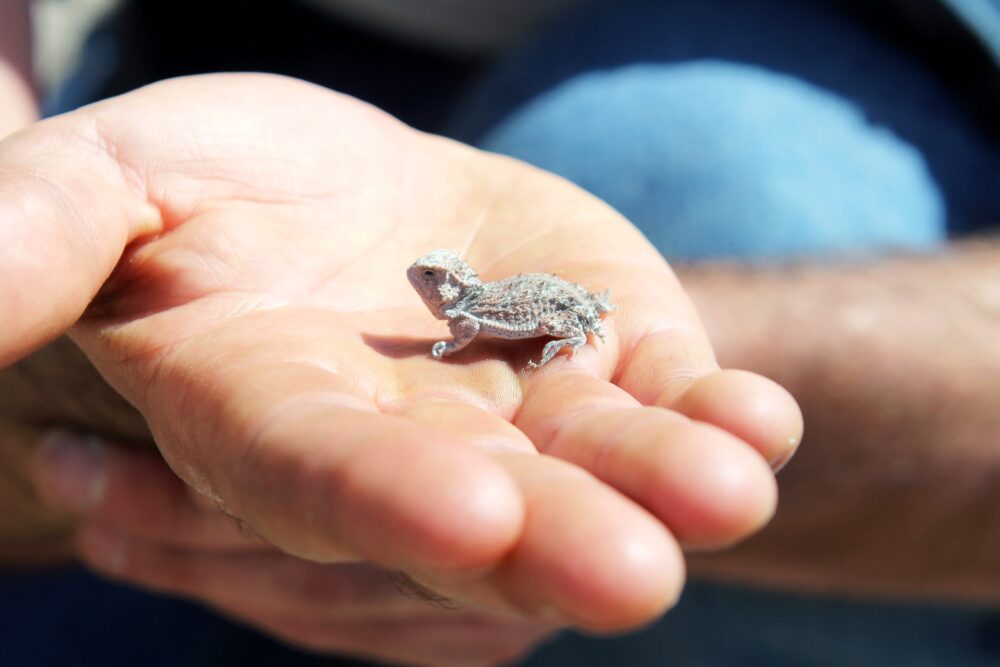The Texas Horned Lizard was once so common that children used them for target practice or blew them up with fire-crackers. Today, few Texans see the state’s most famous lizard in the wild as populations have gradually declined since the 1960s.
On Friday, September 16th, researchers with the Fort Worth Zoo, Texas Christian University, and the Texas Parks and Wildlife Department released 204 captive-bred adults into the wild in an ongoing effort to jumpstart native populations. In August, researchers revealed that previously-released horned lizards appear to be breeding in the wild, a critical step in saving these unique creatures.
The lizard is iconic to Texas’s dusty plains and prairies and has been a revered animal since before the state’s founding. A rare mix of aggressive appearance and docile nature makes the diminutive “horny toad” vulnerable to numerous non-native predators and pet-trade collectors. Texas outlawed collecting wild horned lizards in 1977, and population declines were already noticeable to even casual observers.
Efforts to restore the wild populations have hit numerous bumps along the way, and researchers stress that the wild population of reptiles is far from out of danger at this point. Mortality rates can reach 90%, and the lizards do not hit sexual maturity for at least two years.
The most significant cause of population decline isn’t exactly known. The leading theory is a combination of over-collecting and senseless killing of the lizards in the 1950s and ’60s were responsible for the decline. At the same time, the widespread use of pesticides in Texas killed off populations of harvester ants. Harvester ants are the only food that these animals eat. Development and the introduction of non-native species have also stressed native populations.
While pet dogs and cats have certainly had a major impact on the horned toad population, the biggest threat comes from the fire ants accidentally introduced to Texas in the 1980s. Fire ants can kill juvenile and adult lizards, eat their eggs, and kill colonies of harvester ants. Insecticides used to exterminate fire ants also kill harvester ants, increasing the strain on wild lizard populations.
The news that captive-bred lizards are now reproducing in Mason Mountain WMA is a first-of-its-kind encouragement that efforts to save horned lizards are working. In the past, attempts to relocate wild-born lizards and introduce captive-bred lizards have not increased in the populations.
The Fort Worth Zoo raised nearly half of the lizards, the national leader in captive-bred horned lizards. The program is being replicated at other zoos to bolster the wild population. They are challenging to raise and breed in captivity due to the need for harvester ants and specific UV light requirements.
Researchers with TPWD say that legislation before Congress right now could provide much-needed funding to improve captive breeding programs. The bill is known as the Recovering America’s Wildlife Act, and it could bring as much as $40,000 to help efforts to save the state lizard of Texas.

